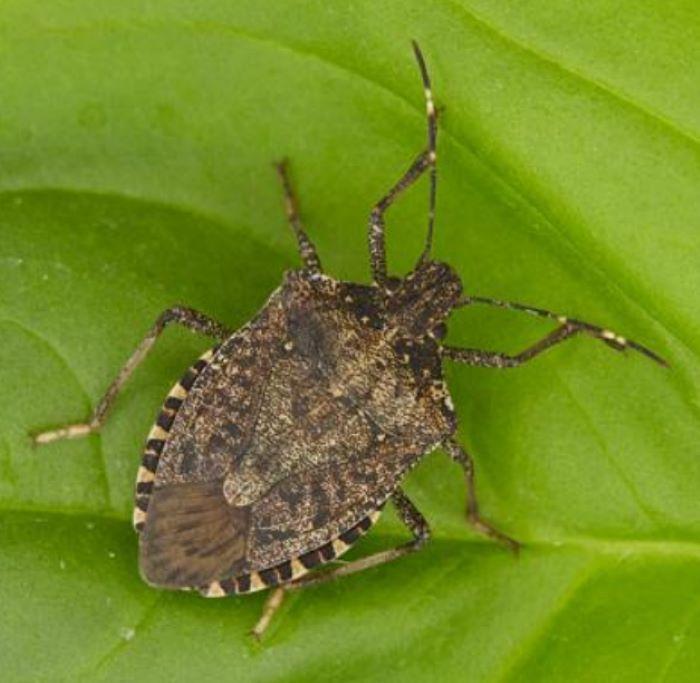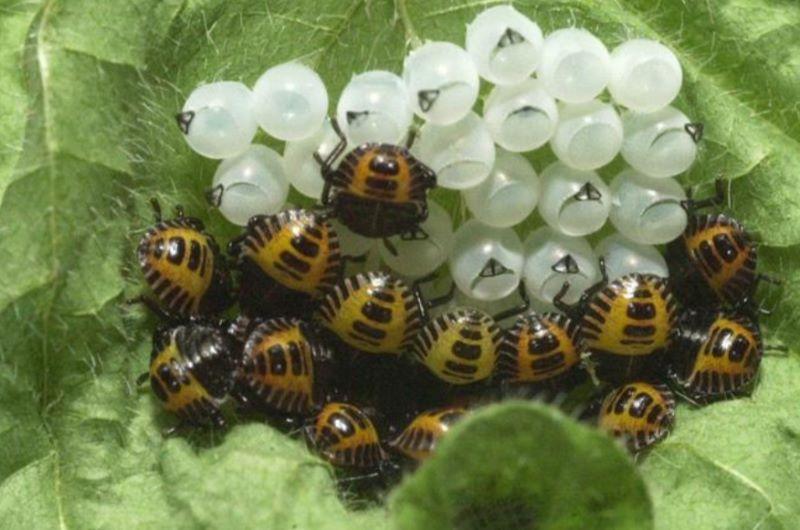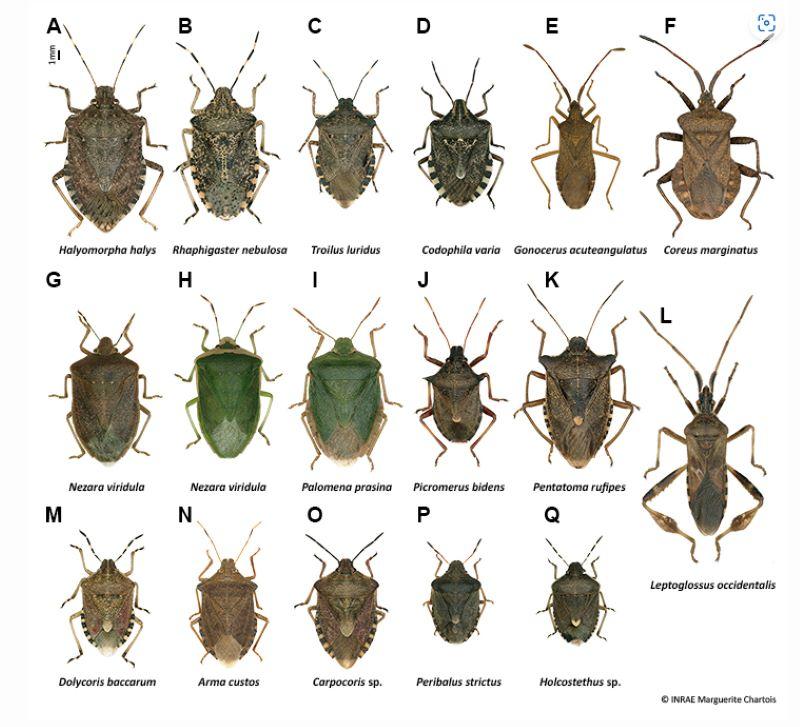Brown marmorated stink bug
Halyomorpha halys
Punaise diabolique
A native to East Asia
they were first recorded in Europe in 2004 and since then have become widespread in many countries including France.
They are polyphagous and are a major pest of apple, pear, kiwi, peach, apricot, cherry, hazelnut, soya and corn crops They are also a pest of peppers grown in glasshouses and polytunnels and can be a nuisance when thousands of adults enter residential and commercial buildings in the autumn to overwinter, leaving a characteristic unpleasant odour. Most other bugs that enter houses for winter do so in smaller numbers.
They are a large bug
that measures between 12 and 17 millimetres long and 7 to 10 millimetres wide. They are recognisable by their brown-grey back, light patterns on the edges of its elytra (hard and horny wings specific to beetles) and the two white marks on its antennae but a little care is required to avoid confusion with other species. The chart from inrae.fr with the links comparing them to other native species is helpful.
Halyomorpha halys compared with other bugs
B.
Rhaphigaster
nebulosa
C.
Troilus
luridus
D.
Codophila
varia
E.
Gonocerus
acuteangulatus
F.
Coreus
marginatus
G
et H.
Nezara
viridula
I.
Palomena
prasina
J.
Picromerus
bidens
K.
Pentatoma
rufipes
L.
Leptoglossus
occidentalis
M.
Dolycoris
baccarum
N.
Arma
custos
O.
Carpocoris
sp.
P.
Peribalus
strictus
Q.
Holcostethus
sp.


